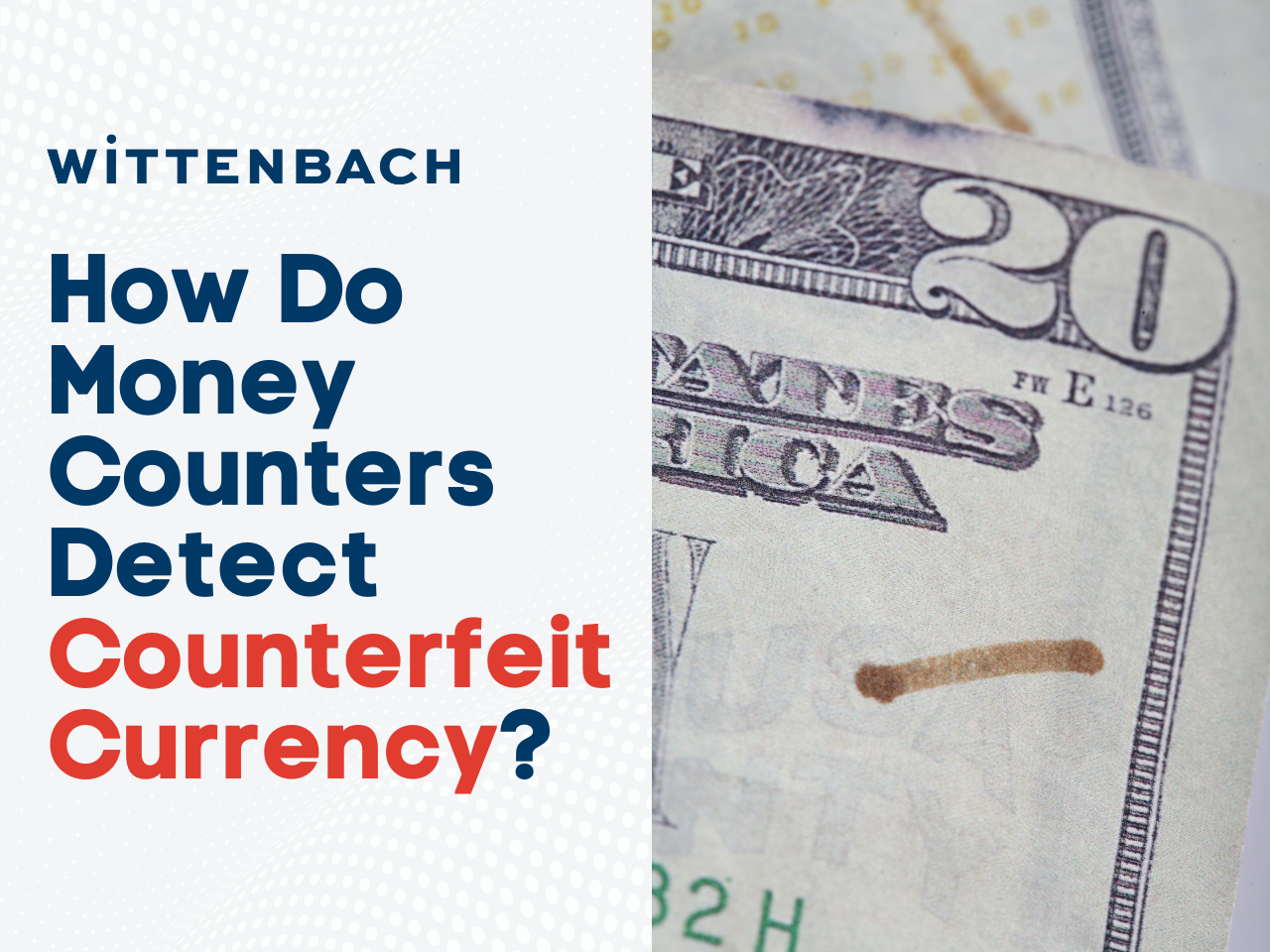Money counters, otherwise known as currency discriminators, are smarter than ever at detecting counterfeit bills. Not only are these machines designed to quickly process cash, the more modern, advanced units have far greater capabilities including discerning between bill denominations, establishing a recorded audit trail, and identifying fraudulent currency.
Money counters explained
Originally invented in the 1920’s, the early money counters “were introduced to keep a tally of running currency as the bank teller sorted and inspected the notes,” says Science ABC. This ancestor of today’s currency discriminators would signal bundles of 100 bills to the tellers, allowing them to more accurately handle the influx of banknotes at the time. Several decades later, in the 1980’s, the process became fully automated with the assistance of computer technology, filtering out worn bills and categorizing them without the manual touch of a teller.
Today’s currency discriminators automate the cash handling process, but they also deter crime by detecting fraudulent bills and removing them from circulation by rejecting them on the spot. The more accurate the detection system, the harder it is for criminals to repeat their counterfeiting actions.
Not only are currency discriminators useful in the financial sector, they are a helpful tool for both counterfeit detection and overall efficiency in any setting involving significant cash handling: larger retail stores, concert venues, restaurants, and more.
What kinds of bill counterfeit exist, and how are they detected?
FraudFighter advises that many forgers use a process called “intaglio” to print counterfeit money, which presses ink deep into paper and provides a texture reminiscent of legitimate currency, including raised features. They add, “Many additional security features, from intricate scrolling to the use of both green and black ink to the use of special paper, have typically presented challenges for all but the most determined counterfeiter. Some features of money are especially hard to reproduce, such as the fine red and blue fibers that are embedded in the paper, or specialty ultra-violet or infra-red fluorescent inks that are difficult to work with.”
The U.S. Currency Education Program offers a downloadable “Teller Toolkit” that outlines ways to identify security features of each U.S. bill denomination currently in circulation, regardless of condition or year a bill was printed. The Teller Toolkit says, “The U.S. government redesigns currency to enhance the security of banknotes. But it’s not necessary to trade in your older-design notes for new ones. All U.S. currency remains legal tender, regardless of when it was issued.” Several of the main identifying features of bills include:
- Raised printing: If you run your finger along the surface of any U.S. banknote, you’ll feel a texture that is specific to that bill’s denomination.
- Microprinting: Magnification can assist the detection of microprinting, which includes incredibly small text in specific areas of printed currency.
- Watermarks: The style of watermark varies from note to note, and each can be seen by holding a bill up to the light. Examples include a faint image of President Jackson on the $20 bill, an image of President Grant on the $50 bill, and a portrait of Benjamin Franklin on the $100 bill.
- Security thread: This feature runs through the length of the bill, printed with different images and messages depending upon denomination.
- Color shifting: In some cases, depending on the angle of the bill, certain features (such as the number 20 on the $20 note) can change color.
Carnation explains how currency discriminators can intervene in the processing of fraudulent bills: “The most common counterfeit detection tool in money counting machines is UV detection. Modern U.S. currency is printed with ink that glows under ultraviolet light. This is a simple and effective way to prevent counterfeit bills, but it is possible to fake the UV strip. Difficult, but possible.” This can also check for markings that should be in certain places on each currency denomination.
Another available detection method in some money counters is a magnetic sensor, which measures the magnetic field on a given bill. Some counterfeiters do use magnetic ink, but its field will lessen over time. A third, and less common, detection method is through the use of infrared rays.
Currency discrimination products Wittenbach recommends
In a previous blog post, we discussed the ways in which Wittenbach partner Cassida has made strides in money counting and counterfeit detection. Consider equipping your branch with the following models
- Cassida Pro Series Zeus Currency Discriminator: Features include a high-definition color screen, building bands of bills by number, the ability to conduct vault audits, and a “reject screen” that explains why currency was rejected. The bill counter reaches a leading-edge speed of 800-1000 bills per minute.
- Cassida Pro Series Apollo Currency Discriminator: Per the Wittenbach website, “The Cassida Pro Series Apollo packs all of the power of the Zeus in a new, more affordable one-pocket platform. Apollo boasts the same superior bill recognition technology, superior counterfeit detection, information-rich reporting and friendly user interface for the Cassida Pro Series has become known.
Conclusion
An expert window into the world of currency discrimination and counterfeit detection can bolster your financial institution’s awareness, and help you choose the right products to enable your tellers. Your staff’s trained eyes are the first line of defense against counterfeit bills, but currency discriminators such as the Cassida Pro Series Zeus or Apollo models further automate the process, adding a layer of security beyond standard human detection. Contact Wittenbach today to learn more about how to leverage cash discriminators across your entire footprint of branches!




